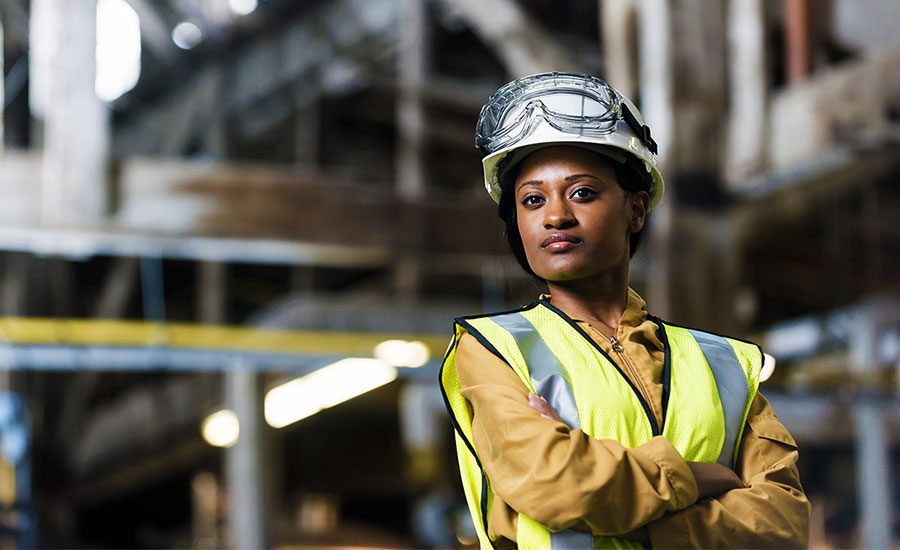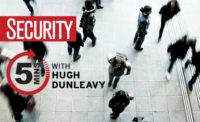The impact of the COVID-19 pandemic has been widespread and unprecedented, creating more lone workers than ever.
Lone workers, found in a wide range of situations, are defined by the Health and Safety Executive as individuals who work alone without close or direct supervision, and are often more vulnerable to risks that many office-based workers may not experience. Lone workers often conduct their duties behind closed doors, or in remote, isolated and high-risk locations, and are unable to receive immediate support from nearby colleagues.
In 2015, Berg Insight reported there were 53 million lone workers in the United States, Canada and Europe combined. International Data Corporation (IDC) estimated that approximately 1.3 billion people are “mobile workers,” or those who work alone continuously or at various times throughout their workday. For the past several years, lone working figures have continued to rise steadily, and increasingly over the past year due to the pandemic.
“Many companies have operations that require employees to be able to work by themselves for some portion of their shift. Lone workers have to deal with all of the normal hazards associated with the work they’re doing with little to no direct supervision or help,” says Brian Harrell, former Assistant Secretary for Infrastructure Protection at the Department of Homeland Security. “Proper training, awareness, and communication are key to ensuring your company’s lone workers can perform their job duties safely.”
According to statistics from the British Safety Council’s crime survey released in 2018, as many as 150 lone workers are attacked either physically or verbally every day, or 54,750 lone workers each year, just in the U.K.
Organizations in charge of protecting lone workers must fulfill their duty of care, taking all steps reasonably possible to ensure the safety, well-being and physical and mental health of their employees, or else, risk leaving critical employees unprotected and at risk.
Managing the Increase in Lone Workers
The pandemic has created unique challenges to the lone worker field, leaving these individuals at increased risk for attacks. Over the past year, New York Metropolitan Transit Authority (MTA) employers, for instance, have been plagued by a surge of attacks, leaving transit workers with serious injuries. In a single week, a subway worker was assaulted, nine were subject to incidents of harassment, and 32 bus drivers reported being harassed in the same period, according to news reports.
Harrell explains, “Lone workers are more vulnerable than ever, and they may be walking into situations where they are at a disadvantage and unprepared. It could be a heightened negative situation where someone has been waiting for the lone workers for days, and they’re highly volatile and upset. They may also encounter an environment or home where someone might be sick or showing signs of COVID-19. This affects their stress levels because they need to get the work done, but they also don’t want to get sick or go back home, or introduce something to their family.”
Along with the increased risk of violence and attacks, another key issue over the past year for many organizations has been managing a surge in their lone workforce, and consequently suffering from a lack of security staff required to properly secure facilities. Karl Perman, president and co-founder of risk consultancy CIP CORE, and a member of Security’s Editorial Advisory Board, says he has observed “skeleton crews” in buildings that traditionally housed workforces that are now remote. “I now consider these lone workers, because the security staff consists of one or two people, responsible for overseeing large campuses or facilities, or hotels. There are very limited staff, which can in turn lead to very poor security.”
Security officers are also being increasingly tasked to do more with less, Perman says. “They’ve been forced into lone worker scenarios and are suffering from a lack of support resources. They cannot just watch people as they used to, as they’re tasked to do an impossible job of dealing with guest requests, front desk work by checking people in and out, while still responsible for overseeing perimeter security and the monitoring of visitors. Many of them do not have life safety devices either – no radios, GPS devices – and they’re left to fend for themselves.”
Perman suggests organizations shouldn’t operate under the same security program that existed pre-COVID-19. As organizations are down to a handful of security staff, security and duty of care programs should be updated in line to the current environment and specific security needs. “People should be funneled into one entrance and exit area. More alarms and cameras should be installed, as well as roving patrols with law enforcement conducting increased checks,” he says.
A Commitment to Crisis and Risk Management
Over the past 15 months, crisis management has become a key focus for Schneider Electric’s security department, says Jim Snodgrass, Head of Security for North America, who oversees the protection of the company’s remote locations, including personnel in the U.S., Canada, Mexico and Central America.
Schneider Electric, a global specialist in energy management and automation with operations in more than 100 countries, offers integrated solutions across multiple market segments. Snodgrass says he specifically looked at the increase of lone workers within the organization and implemented a multi-faceted worker safety and security program consistent with duty of care standards. “We increased safety and security practices to help preclude inadvertent harm to lone workers, as a limited number of individuals continued to work in the office.”
At the energy management company, lone workers encompass employees working without direct supervision during business or non-business hours, such as individuals performing a task in the R&D laboratory, security officers that secure the organizations’ facilities after-hours, field service representatives or transportation professionals. “All of these individuals who work alone fall into our lone worker overview program. We put together safety and security protections that take into consideration the duties they perform when working alone, how likely a threat is, the location, distances from help, and communications capabilities,” Snodgrass explains.
In particular, Snodgrass says he has leveraged the organization’s risk management program to better understand the nature of the threats associated with the increase in lone workers, as well as the pandemic’s toll on mental health. “State of mind is very challenging to manage during the pandemic. Over time, people have become irritable as they deal with many personal issues, such as family members losing jobs, or finding working from home was not what they expected as they miss the sense of community,” he says.
Security leaders and executives should understand these precise vulnerabilities for the members of their team, says Brian Cooke, Corporate Security Manager and International Security Operations for Marathon Petroleum Corporation, who oversees travel security, supply chain security, physical security and executive protection. “Organizational resiliency is built upon personal resiliency. The organization is made up of people primarily, supported by IT and equipment and all the excellent, modern, security technology. What happens when the primary component of your security system fails? Because that primary component is your people, the humans working for you.”
As a result of the pandemic, more employees are isolated, and as such, an increase in anxiety, depression, and even suicides in society throughout 2020 have been well documented, Cooke says. “The question is, what are security leaders doing to mitigate these safety risks and support and increase the resiliency of their teams?”
To effectively deal with these challenges facing remote and lone workers, security executives should take the time to learn the new landscape and how it may affect their organization. “Every worker’s individual situation will be different and a thorough security risk assessment should be done for each lone worker employee encompassing all security and safety aspects, as well as risks to the employee’s overall well-being that could affect their health and resiliency,” Cooke suggests.
Similarly, Snodgrass and his team also start with a risk assessment process, evaluating the location of the “workplace,” distances traveled to and from assignments, road conditions and whether the work is carried out in areas known for specific safety or security hazards. “To manage this risk, we implemented more direct hands-on field service, GPS, monitoring and communications, as well as an increased level of training for lone workers.”
In one instance, a lone worker at the office became fearful because she believed she was being potentially sought out by another individual not associated with the company. “We deployed measures to help assure her security that went above and beyond increasing camera coverage, including increasing duress alarm capabilities as well as providing specific training and communications support.”
With consistent lone workers, such as Schneider Electric security officers and other service personnel that work midnight, weekends and holidays shifts, Snodgrass has increased the number of security officers with traditional man down devices that have haptics integrated into the device, which can detect if there’s a fall, a sudden drop in elevation, or if an individual has fainted. The device then triggers a call from the organization’s security operation center (SOC) to the lone worker. Snodgrass says, “The process allows for protection during after hours, especially as security officers conduct perimeter or facility checks. If there is an emergency, then the SOC can help respond holistically at many of our sites.”
Like most organizations during the pandemic, Schneider Electric has initiated the process of implementing remote monitoring technology to digitally safeguard locations supporting traditional lone workers. The technology allows them to focus on furthering the remote and lone work capability to not only safeguard security staff, but to provide greater security support to lone workers inside the buildings. “Remote monitoring or virtual guarding significantly enhances the overall safety of infrastructure and assets. It augments the protection of parking lots, especially during off hours when the traffic and activity is low and allows the company to focus us on potential threats and risks,” Snodgrass explains.
High-Risk Environments
In high-risk environments such as global supply chain operations — including manufacturing, distribution centers and field service workers — where lone workers are working with high-voltage systems or working with systems and platforms that inherently put them at risk, Snodgrass says they have taken great steps to raise the level of awareness with employees, making it critical to have communications available to supervisors in the immediate areas. Snodgrass and his team specifically implemented a “no one works alone after 7:00 p.m.” policy at one of the sites where crime had increased in the area. “Lone workers would be escorted out of the facility and to their cars in the parking lot by a security officer. We also put lone workers in pairs to reduce the risk as well,” he explains.
Harrell explains security management must find innovative ways to deal with the evolving threats pertinent to the lone workforce. “A proactive approach is the best defensive strategy for field employees. This approach is centered on providing information and training to field employees on tools and practices to prepare them in identifying high-risk environments and to implement the best course of action.”
First, he says that security management must establish and promote its security event reporting program throughout the organization. “Second, security management should make itself aware of available crime statistics depicting violent crimes and property crimes as collected by law enforcement from the communities their organizations serve. These two components should alert security management of areas of high risk within which field employees must work,” Harrell says.
In remote locations, communication is key, Snodgrass says. “There are parts of our regions where the communication may be limited. In that case, lone workers, or service representatives who may be transporting a high amount of copper or other metals within Mexico, check in and the active monitoring begins. Specifically, they use GPS tracking, which offsets any of the basic cell phone coverage gaps.”
Some security officers within Schneider Electric North America have converted to handheld systems that have direct communication with the SOC for an increased level of support. “If they are out of direct communication in a dead zone, they receive a ping from the SOC to check in when connectivity is gained,” Snodgrass explains. “We couple GPS tracking with other safety measures: advanced pre-planning, check-in points, and training.”
As there is limited supervision to control, guide and help in uncertain and dangerous situations, scenario-based training is critical for lone workers as well. The training may help develop mental readiness for any hazards they may encounter, and help reduce distress, panic and the risk of physical injury, Snodgrass says.
The Future of Lone Workers
Overall, employers are responsible for developing a proactive and comprehensive duty of care program, and providing employees with all of the tools they need to perform their job as safely as possible, Harrell says. “They also need to constantly keep their lone employees informed of what is happening with their job and company, what the status is, and what changes are coming — this includes any new federal, state and county rules and regulations. So, you need to need keep them informed and provide them with any tools they might need, any masks, if they need gloves, if they need hand sanitizer or if they need certain personal protective equipment.”
In particular, with the increase of lone workers, security leaders and all managers should seek out resources and procure them if necessary, in order to support the productivity and safety of their employees operating in a lone working environment, Cooke suggests. “Great leadership encompasses good management. Security leaders must have a vision for the success of their organization and the ability to inspire their people and influence cross-organizationally. They must also have sound people management skills. Focusing on the resiliency of your people will make your teams stronger and your overall organization more resilient. A good security manager hires good people and provides them with the direction, information and resources they need to succeed. In today’s remote work and lone working environment that information and those resources have changed. Security leaders must recognize that and adapt if they wish to sustain, or even grow, the resiliency of their organizations.”
Perman says it will take some time to start seeing some resemblance of a new “kind of normal. The new normal will keep encompassing more lone workers and remote employees. Security plans will have to be updated to prepare for this change in the workforce, such as employees working from offices twice a week, or rotating through a morning and afternoon schedule.”
Continues Perman, “The question is and will be, where does the line cross or extend as far as business and personal space, and then, what can businesses do to better protect the safety of their employees while they work in their personal and segregated spaces?”








